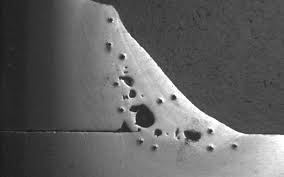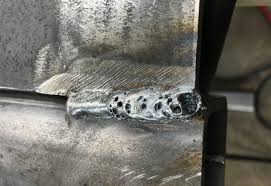Deciphering the Enigma of Porosity in Welding: Tips for Decreasing Flaws and Maximizing Quality
In the detailed world of welding, porosity continues to be a persistent challenge that can significantly impact the high quality and stability of bonded joints. As we dive right into the midsts of porosity in welding, revealing the tricks to its prevention and control will be paramount for professionals seeking to grasp the art of high-quality weldments.
Comprehending Porosity in Welding
Porosity in welding, a typical issue come across by welders, describes the visibility of gas pockets or spaces in the welded material, which can endanger the stability and top quality of the weld. These gas pockets are commonly trapped throughout the welding procedure due to numerous factors such as improper securing gas, infected base materials, or incorrect welding parameters. The development of porosity can damage the weld, making it prone to breaking and corrosion, eventually causing architectural failings.
By recognizing the relevance of keeping correct gas securing, making certain the sanitation of base products, and maximizing welding settings, welders can significantly reduce the probability of porosity development. Overall, a comprehensive understanding of porosity in welding is essential for welders to produce top quality and durable welds.

Typical Reasons of Porosity
When inspecting welding procedures for possible quality concerns, recognizing the usual root causes of porosity is essential for maintaining weld integrity and preventing architectural failings. Porosity, characterized by the visibility of dental caries or voids in the weld metal, can dramatically jeopardize the mechanical properties of a welded joint. One common source of porosity is incorrect protecting gas coverage. Inadequate securing gas flow rates or improper gas combinations can bring about climatic contamination, resulting in porosity formation.
Additionally, welding at improper specifications, such as excessively high travel rates or currents, can generate extreme turbulence in the weld swimming pool, trapping gases and creating porosity. By dealing with these common reasons through proper gas shielding, product preparation, and adherence to optimal welding parameters, welders can reduce porosity and boost the high quality of their welds.
Strategies for Porosity Avoidance
Implementing efficient preventive measures is critical in minimizing the incident of porosity in welding processes. One strategy for porosity prevention is ensuring correct cleansing of the base metal prior to welding. Contaminants such as oil, oil, rust, and paint can cause porosity, so comprehensive cleaning making use of suitable solvents or this page mechanical approaches is necessary.

An additional secret precautionary measure is the option of the right welding consumables. Making use of top quality filler products and securing gases that are ideal for the base steel and welding procedure can significantly lower the threat of porosity. Additionally, keeping appropriate welding parameters, such as voltage, current, travel rate, and gas circulation rate, is essential for porosity avoidance. Differing the suggested setups can result in improper gas protection and poor blend, causing porosity.
Additionally, employing appropriate welding methods, such as keeping a consistent travel speed, electrode angle, and arc size, can assist stop porosity (What is Porosity). Sufficient training of welders to ensure they follow best practices and quality assurance procedures is also necessary in lessening porosity flaws in welding

Best Practices for Top Quality Welds
Guaranteeing adherence to sector standards and correct weld joint prep work are basic elements of achieving continually top notch welds. In enhancement to these foundational steps, there are numerous finest methods that welders can implement to even more enhance the top quality of their welds. One key technique is preserving correct tidiness in the welding area. Impurities such as oil, grease, rust, and paint can negatively influence the quality of the weld, causing issues. Thoroughly cleansing the workpiece and bordering location prior to welding can help alleviate these issues.
An additional ideal practice is to thoroughly select the appropriate welding parameters for the specific products being joined. Correct criterion choice ensures optimum weld go penetration, blend, and general top quality. Using high-grade welding consumables, such as electrodes and filler metals, can dramatically affect the last weld quality.
Relevance of Porosity Control
Porosity control plays a crucial function her latest blog in making sure the honesty and high quality of welding joints. Porosity, characterized by the existence of cavities or spaces within the weld metal, can significantly endanger the mechanical properties and structural stability of the weld. Excessive porosity deteriorates the weld, making it extra vulnerable to splitting, deterioration, and overall failing under operational tons.
Effective porosity control is crucial for preserving the wanted mechanical homes, such as stamina, ductility, and strength, of the welded joint. What is Porosity. By minimizing porosity, welders can enhance the overall quality and integrity of the weld, making certain that it meets the efficiency requirements of the intended application
Additionally, porosity control is crucial for attaining the wanted aesthetic look of the weld. Extreme porosity not just compromises the weld however likewise interferes with its visual appeal, which can be essential in industries where appearances are vital. Appropriate porosity control methods, such as using the right shielding gas, managing the welding parameters, and making certain correct cleanliness of the base products, are necessary for creating top notch welds with marginal issues.

Conclusion
In conclusion, porosity in welding is a typical issue that can compromise the quality of the weld. It is important to manage porosity in welding to guarantee the integrity and stamina of the last item.